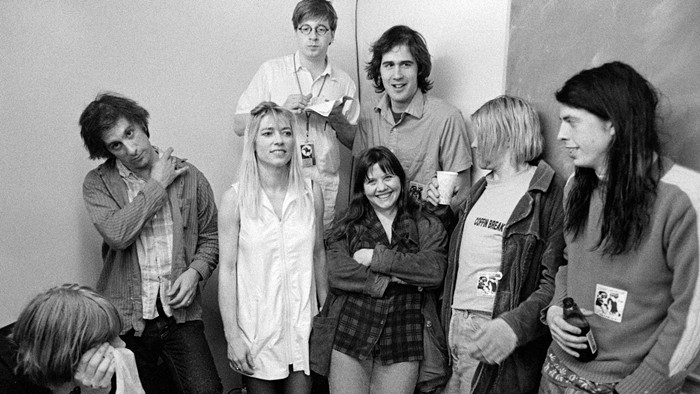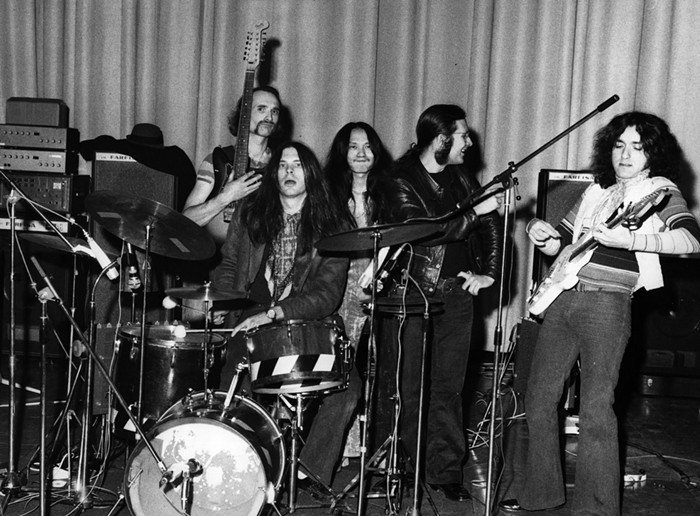w/the Locust, Trevor Dunn's Trio Convulsant
Tues April 26, Showbox, 8 pm, $20.50/$22, all ages.
The slavering cult-following that has developed around Mike Patton over the past couple of decades has been somewhat without a golden idol for some time. After Faith No More (really just a weird, lucrative sidestep) and since the dissolution of Mr. Bungle, there has been no central focus of the Pattonverse. In recent years he has constructed a couple of obliquely weird cut-and-paste solo records for John Zorn's Tzadik label, gotten deep lothario with Dan the Automator in Lovage, reflirted with hard rock in Tomahawk, and dueled with legendary turntablists the X-Ecutioners. All of these ventures, while generally entertaining and sometimes totally thrilling, have felt afflicted by something of a commitment problem on Patton's part. Now, however, it seems as though Fantômas, the Mt. Rushmore-ish quartet of Patton, Melvins guitarist King Buzzo, Mr. Bungle bassist Trevor Dunn, and Slayer drumotaur Dave Lombardo have grown to the proverbial matrimonial throne.
On their 1999 self-titled debut, Fantômas defined their style briskly--a pepper-spray of fractured grindcore with small doses of the operatic mega-drama and genre-biting chicanery of Mr. Bungle. Similarly, Patton defined his own role in the band--a wordless instrument whose palette was a weird mélange of death metal growls, Tom Waits onomatopoeia, cartoonish Valkyrie falsetto, and Indonesian monkey chant. Undeniably, Fantômas owed a large debt to John Zorn's epochal Naked City, the style-hopping, hardcore-fucking jazz A-Team that for many were the shining zenith of New York's experimental scene in the '80s and early '90s. Unlike Naked City (or Mr. Bungle for that matter), however, Fantômas jettisoned a lot of the shock-and-awe constant genre shifts and jolting humor for a more streamlined and brutal model of synapse overload. Fantômas' immediate follow-up, the film-score covers album The Director's Cut, while in many ways a superior record to its predecessor, pretty much short-circuited any expectations of Fantômas as a "regular" band. Diluting the band's trajectory with a tribute to film composers like Nino Rota and Ennio Morricone, while certainly not out of character for the Patton M.O., definitely made Fantômas seem more like another tool in the box and less like a fully committed artistic force.
On their two most recent albums, however, Fantômas seem to have fully hit their collective stride. The just-released Suspended Animation and last year's Delirium Cordia (recorded in the same time period), illustrate how Fantômas have developed exponentially beyond a "project" or supergroup vanity ballsfest into a creatively fire-breathing and decidedly for-real band. Though it's ostensibly a tribute to cartoon music and a multimedia concept record (30 songs for the 30 days of April, as illustrated by Japanese artist Yoshimoto Nara), Suspended Animation feels like the most complete and focused statement of Fantômas as a band thus far. It is an exhilarating record--the assault feels simultaneously more pop and more head-cutting than ever before, and the songs are seasoned liberally with circuit-bent bleeps and the eight-bit doodles of children's technology in lieu of the orchestral jokes and Foley effects of classic cartoon music (though some rays of Warner Bros. occasionally sneak through the squall).
Conversely, Delirium Cordia feels like the recorded equivalent of Jacob's Ladder--the moment of death stretched out to a nightmarish Homeric journey. Seemingly ruled by the opposing poles of a dying body on the operating table and the cavernous oblivion of the great beyond, Delirium Cordia is a through-composed mass of crushing weight. With lots of unsettling space and a general ambience of clinical pain, Delirium Cordia melds the doom synths and guitars of black metal with the sort of deep-well choral mourning of 20th-century composers like Arvo Pärt and Alfred Schnittke. It is the Marianas Trench to Suspended Animation's sun-dappled swimming pool, but together the pair paint a truly exciting picture of Fantômas' future and make a pretty indisputable case for their emerging role as the star progeny of the Patton family tree.
Paradoxically, by engaging the geekiest of music-geek loves (cartoon music, Italian horror-movie soundtracks, the Knitting Factory scene) head-on, Fantômas have achieved a clarity and sincerity absent in a lot of Patton's deeper dabblings and have broken through the black forest of their myriad influences with juggernaut force to emerge victorious and golden.


















